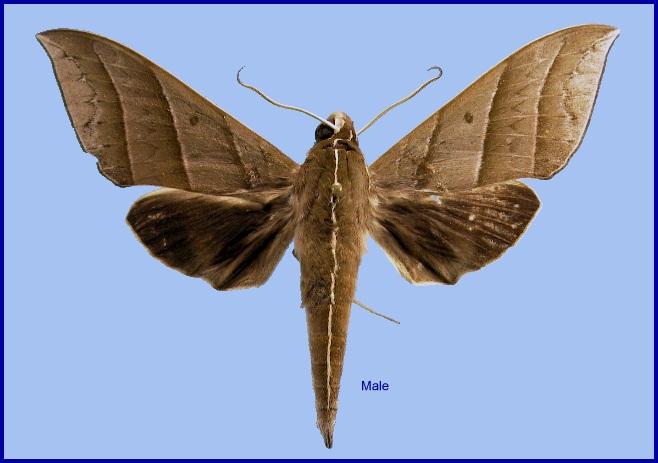
Philampelus dolichoides Felder, R., [1874], in Felder, Felder & Rogenhofer, Reise öst. Fregatte Novara (Zool.) 2 (Abt. 2): pl. 76, fig. 8. Type locality: [India], Sikkim [West Bengal], <<Darjeeling>> [Darling].
Synonym. Philampelus dolichoides Felder, R., [1874].
Synonym. Ampelophaga dolichoides (Felder, R., [1874]).
Note. With the discovery of the early stages, it is very apparent that this species belongs in the genus Elibia, not Ampelophaga, a conclusion supported by the phylogenetic work of Kawahara et al. (2009). However, the pupa lacks the free, jug-handle tongue-case found in Elibia dolichus. This is not significant as such variation is also present in the genus Hyloicus.
Wingspan: 80--100mm. Forewing upperside distinctive, with four grey lines forming the proximal borders of tawny-olive bands; A weakly-marked, brown zigzag line present between the two discal lines. Hindwing veins M3 and Cu1 less close together than in Ampelophaga rubiginosa, the cross-vein m2–m3 not being longer than m3–Cu1. Midtarsus with spines of the fourth row elongated.
In the male genitalia, uncus sinuate in distal view. Valve with about 16 large stridulatory scales that are rounded-truncate, broad at the ends. Harpe with process short, not dentate. Phallus with apex asymmetrical, both processes dentate.
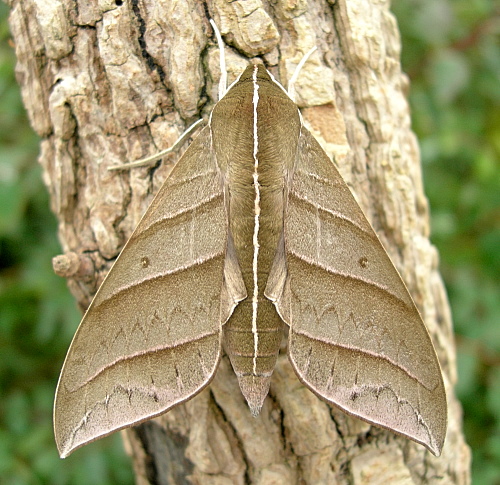
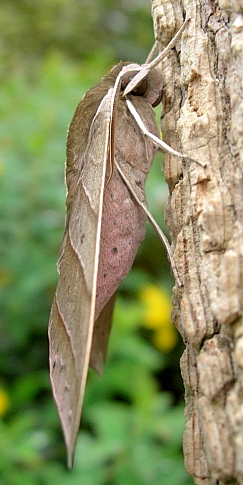
A rainforest species in southern China, frequenting small clearings. It breeds in these on woody Vitaceae hanging from the canopy.
China: 3.iii (Guangxi); 31.iii.2013 (Yunnan); 1.iv (Guangxi); vii (Xizang/Tibet; Yunnan); 5-13.viii (Yunnan); ix (Yunnan; Guangxi).
OVUM: Unknown.
LARVA: Present in the rainy season. Up until the final instar the larva rests along the midrib on the underside of leaves. In the final instar (which can be either green or brown) it retreats by day to brown woody stems, generally only feeding at night on mature leaves. Not a very active species. Eats very little compared to other larvae of similar size.
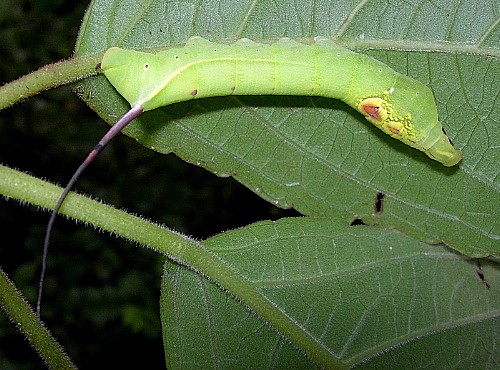
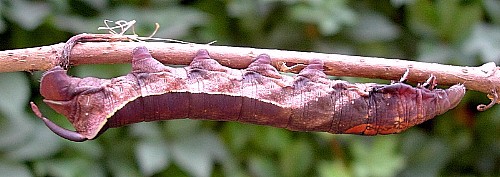
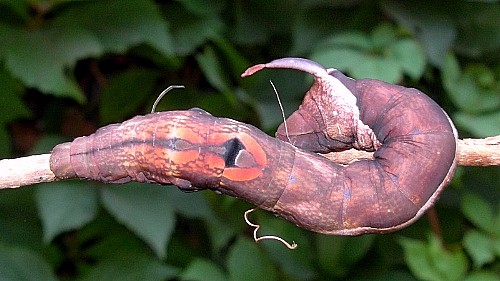
PUPA: Similar in shape to that of Acosmeryx, and almost immobile. Formed in cell of leaves held together with silk strands.
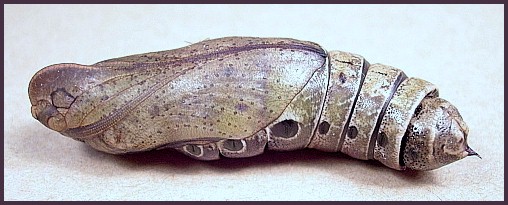
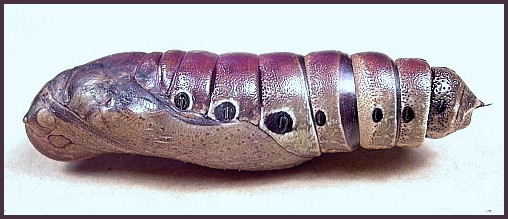
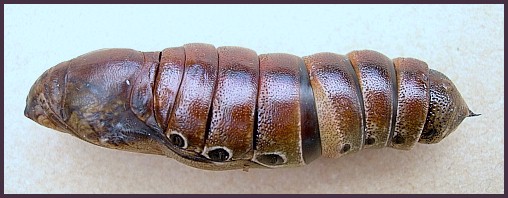
Larval hostplants. Species of Vitaceae, particularly the mature leaves. Recorded from Tetrastigma cruciatum Craib & Gagnep. in Yunnan (ZhenBang Xu, pers. comm 2025). A larva found on Tetrastigma in Xishuangbanna in 2005 was reared on Parthenocissus inserta.
Unknown.
China: Yunnan (Cangyuan; Yexianggu, Xishuangbanna; Simao/Pu'er; Jinghong; Menglun); Xizang/Tibet (Xiachayu, Zayu County); Guangxi (Chongzuo; Longzhou County; Longheng; Faxian Nongang Ecotourism Park).
From Nepal, Bhutan (Irungbam & Irungbam, 2019) and northeastern India (Subhasish Arandhara, 2017; Hmar et al., 2023), across Thailand, Laos and southwestern China to central Vietnam (Le & Vu, 2024) and Selangor, Peninsular Malaysia.
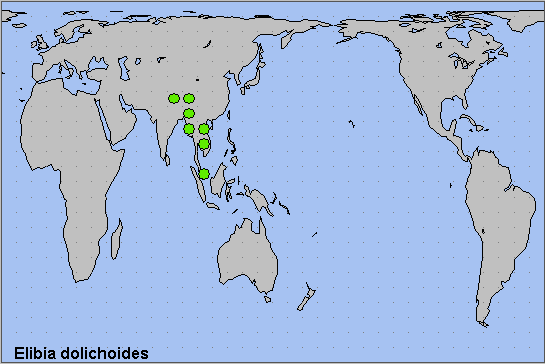
 Return to Sphingidae of the Eastern Palaearctic species list
Return to Sphingidae of the Eastern Palaearctic species list